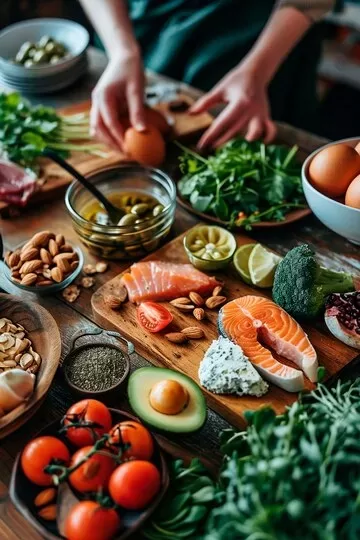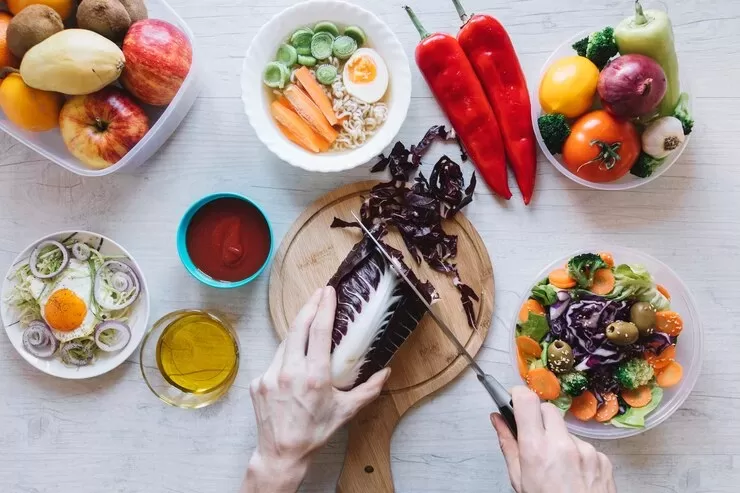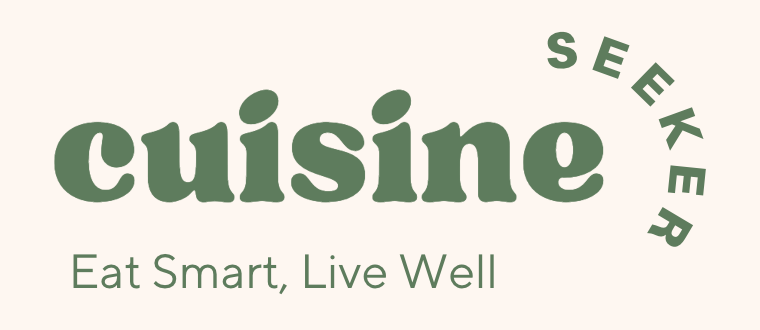Are you curious about the paleo lifestyle? This ancient way of eating, inspired by our hunter-gatherer ancestors, has gained immense popularity in recent years. We’ll explore the key components and potential benefits of the Paleo diet, as well as the foods to embrace and avoid.
Whether you’re looking to improve your health, lose weight, or simply try something new, the Paleo lifestyle offers a unique and intriguing option. So, are you ready to take a step back in time and experience the benefits of ancestral eating?
The Paleo Lifestyle Essentials
The Paleo diet is a dietary approach inspired by the eating habits of our Paleolithic ancestors. Here’s a breakdown of the key components:
- Lean Meats: Grass-fed beef, lamb, poultry, and wild game
- Fish: Fatty fish like salmon, mackerel, and sardines, rich in omega-3 fatty acids
- Fruits: A variety of fresh, seasonal fruits
- Vegetables: Leafy greens, cruciferous vegetables, and other non-starchy vegetables
- Nuts and Seeds: Almonds, walnuts, chia seeds, flaxseeds, and hemp seeds
- Healthy Fats: Olive oil, avocado, and coconut oil
The Paleo diet excludes modern foods that were not part of our ancestors’ diets, such as:
- Processed Foods: Packaged snacks, sugary drinks, and processed meats
- Grains: Wheat, rice, corn, and other grains
- Legumes: Beans, lentils, and peas
- Dairy: Milk, cheese, and yogurt
By adhering to these principles, the Paleo diet aims to align our eating habits with our evolutionary biology, potentially leading to improved health and well-being.
Nutritional Richness of the Paleo Diet
The Paleo diet’s emphasis on whole, unprocessed foods provides a rich source of essential nutrients. Here are some key nutritional benefits:
| Nutrient | Food Source |
| Vitamins | |
| Vitamin A | Liver, sweet potatoes, carrots, spinach |
| Vitamin C | Bell peppers, citrus fruits, strawberries, kale |
| Vitamin K | Leafy greens (kale, spinach), broccoli, Brussels sprouts |
| B Vitamins | Organ meats, nuts, seeds, leafy greens, fish |
| Minerals | |
| Magnesium | Nuts, seeds, leafy greens, dark chocolate |
| Potassium | Bananas, avocados, spinach, sweet potatoes |
| Iron | Organ meats, red meat, leafy greens, lentils |
| Other | |
| Antioxidants | Berries, dark chocolate, nuts, seeds |
| Omega-3 Fatty Acids | Fatty fish (salmon, mackerel), chia seeds, walnuts |
| Lean Protein | Grass-fed beef, chicken, fish, eggs, nuts, seeds |
By consuming these nutrient-dense foods, individuals can experience:
- Increased energy levels: Improved nutrient intake can enhance overall vitality.
- Better skin health: Antioxidants and essential fatty acids contribute to healthy skin.
- A stronger immune system: Adequate nutrients support a robust immune response.
The Paleo diet’s focus on whole foods ensures a well-rounded nutritional profile, providing a solid foundation for optimal health.
Gut Health and Reduced Inflammation
The Paleo diet’s focus on whole foods and avoidance of processed foods can significantly benefit gut health. Here’s how:
- Reduced inflammation: Processed foods often contain additives and sugars that can disrupt the gut microbiome, leading to inflammation. The Paleo diet’s emphasis on whole, unprocessed foods can help reduce inflammation throughout the body.
- Improved gut microbiome: A healthy gut microbiome is essential for overall health. By eliminating processed foods and focusing on fiber-rich whole foods, the Paleo diet can support a more balanced gut microbiome.
- Potential relief from autoimmune diseases: Some studies suggest that a healthier gut microbiome may be beneficial for individuals with autoimmune diseases. By reducing inflammation and supporting gut health, the Paleo diet may help alleviate symptoms associated with these conditions.
| Benefit | Food Source |
| Reduce Inflammation | Fatty fish (salmon, mackerel), Leafy greens (kale, spinach). Berries |
| Improved Gut Microbiome | Fermented foods (kombucha, kefir), Prebiotic fibers (asparagus, onions, garlic), Bone broth |
| Potential Relief from Autoimmune Diseases | Organ meats (liver, heart), Bone broth |
Overall, the Paleo diet’s approach to gut health can contribute to improved digestion, reduced inflammation, and potentially better overall well-being.

Weight Management and Metabolic Health
The Paleo diet’s focus on whole, unprocessed foods can contribute to weight management and improved metabolic health. Here’s how:
- Increased satiety: The high protein and fiber content of Paleo foods can help you feel fuller for longer, reducing overall calorie intake.
- Reduced calorie intake: By eliminating processed foods, sugary drinks, and refined grains, you may naturally consume fewer calories.
- Improved insulin sensitivity: The Paleo diet’s focus on whole foods and avoidance of refined sugars can help improve insulin sensitivity, reducing the risk of type 2 diabetes.
- Reduced risk of cardiovascular disease: A healthy diet, including the Paleo approach, can contribute to lower blood pressure, cholesterol levels, and a reduced risk of cardiovascular disease.
| Food sources | Percentage/Servings |
| Increased Satiety | |
| Nuts (almonds, walnuts) | 1/4 cup |
| Seeds (chia, flax) | 1 tablespoon |
| Avocado | 1/2 avocado |
| Reduced Calorie Intake | |
| Lean protein (chicken, fish, eggs) | 3-4 ounces |
| Non-starchy vegetables (broccoli, spinach) | 1-2 cups |
| Whole grains (if allowed) | 1/2 cup cooked |
| Improved Insulin Sensitivity | |
| Fatty fish (salmon, mackerel) | 3-4 ounces |
| Leafy greens (kale, spinach) | 1-2 cups |
| Berries | 1 cup |
| Reduced Risk of Cardiovascular Disease | |
| Fatty fish (salmon, mackerel) | 3-4 ounces |
| Nuts (almonds, walnuts) | 1/4 cup |
| Avocados | 1/2 avocado |
While individual results may vary, many people who adopt the Paleo diet report improvements in weight management and overall metabolic health.

Enhanced Physical Performance
The Paleo diet can be a valuable tool for athletes and active individuals seeking to optimize their physical performance. Here’s how:
- Muscle repair and growth: The high-quality protein found in meat, fish, and eggs supports muscle repair and growth, essential for athletes and fitness enthusiasts.
- Improved recovery: The abundance of vitamins and minerals in Paleo foods can aid in quicker recovery times after workouts.
- Enhanced endurance: Adequate hydration and nutrient intake, provided by the Paleo diet, can contribute to improved endurance during physical activity.
By adopting the Paleo diet, athletes may experience adequate protein intake supports muscle development, nutrient-rich foods can aid in post-workout recovery and a well-nourished body can perform at its best.
A Sustainable Approach to Health
While the Paleo diet offers numerous health benefits, it’s essential to approach it as a flexible lifestyle choice rather than a rigid regimen. Here are some key considerations:
- Individual needs: Listen to your body and adjust the Paleo diet to suit your specific needs, allergies, and preferences.
- Moderation: While focusing on whole, unprocessed foods, enjoy them in moderation and avoid excessive consumption.
- Balance: Incorporate a variety of foods from the Paleo diet’s recommended categories to ensure a well-rounded nutritional profile.
- Flexibility: Don’t be afraid to experiment and find what works best for you. The Paleo diet is a starting point, not a one-size-fits-all solution.
If you’re interested in exploring the Paleo diet and its potential benefits, consider joining my 8-week self-paced gut healing program. With a wealth of resources and personalized guidance, you’ll be well on your way to a happier, healthier you.

FAQs
What is a paleo healthy lifestyle?
A Paleo healthy lifestyle is based on the idea of eating foods similar to those consumed by our hunter-gatherer ancestors. This involves avoiding processed foods, grains, legumes, and dairy, and focusing on lean meats, fish, fruits, vegetables, and nuts.
What are 5 negatives from the paleo diet?
- Nutrient deficiencies: A restrictive paleo diet may lead to deficiencies in certain nutrients, such as calcium, vitamin D, and fiber.
- Social challenges: Adhering to the paleo diet can be socially challenging, especially when dining out or attending social gatherings.
- Expensive: The paleo diet can be more expensive than a traditional diet, especially if you need to purchase organic or grass-fed products.
- Limited scientific evidence: While some studies suggest benefits, more research is needed to confirm the long-term effects of the paleo diet.
- Potential for disordered eating: Restrictive diets can contribute to unhealthy eating habits and disordered eating patterns.
What is living paleo?
Living paleo involves adopting a lifestyle that aligns with the principles of the paleo diet. This may include engaging in regular physical activity, getting enough sleep, and managing stress.
What foods are not allowed on paleo?
The paleo diet generally avoids processed foods, grains, legumes, and dairy. This includes bread, pasta, rice, cereals, beans, lentils, milk, yogurt, and cheese. However, some people may tolerate certain dairy products in moderation.





